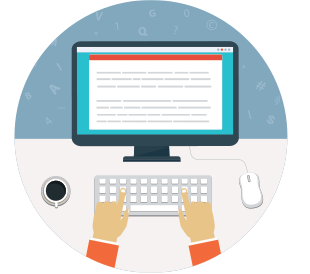Practice Management or EHR Software: What Does Your Optical Practice Need?
The optical software landscape has been evolving for a while now. Products that were once stand-alone solutions have morphed into one complete solution to help your practice better manage the patient’s journey from check-in through check-out.
While many software vendors offer a complete practice management and EHR software, there can be confusion in understanding the exact details of what you need each one for. This post aims at eliminating that confusion by identifying what each solution is, where the solution can be used in the patient journey, and the benefits of a complete solution over traditional methods.
Uncovering the Difference Between Practice Management and EHR Software
Practice Management
Practice management systems provide medical practices with software that streamlines many of the day-to-day administrative work. Practice management solutions often act as a bridge between your front office staff and your patients, and provide your staff an efficient way to manage patient records and securely communicate with them through a patient portal.
Practice management solutions can help your staff with:
- Capturing patient demographics
- Patient scheduling
- Billing
- Insurance claim processing
- Ophthalmic product ordering
- Reports
Electronic Health Records System
Electronic Health Record (EHR) systems replace paper charts to provide ODs easy access to a patient’s past medical history, special testing results, allergies, medications, and any images uploaded from digital imaging equipment. Some optometric EHR software is designed to mimic how an OD would traditionally perform a paper exam.
Many EHR solutions come embedded with other software solutions such as code verification, ePrescribing, and patient education tools to help connect your patients’ with the best care you can deliver.
With a complete EHR software solution, you gain:
- Clinical decision support
- Customizable settings
- Secure messaging templates
Comprehensive Practice Management and EHR Solution
Now that you know the difference between both solutions, you need to figure out which solution you need for your practice. Luckily, there are solutions on the market that offer a combined, comprehensive practice management and EHR solution. An all-in-one system helps keep your team working on the same platform and reduces data entry errors and wasted time switching between tools. The more streamlined you can make technology work for you, the better!
Along with achieving the benefits of having both solutions, having an EHR and practice management tool helps advance communication throughout the practice and decreases costly data entry errors between lanes.
For more advice on shopping for the best software, download our ebook.

